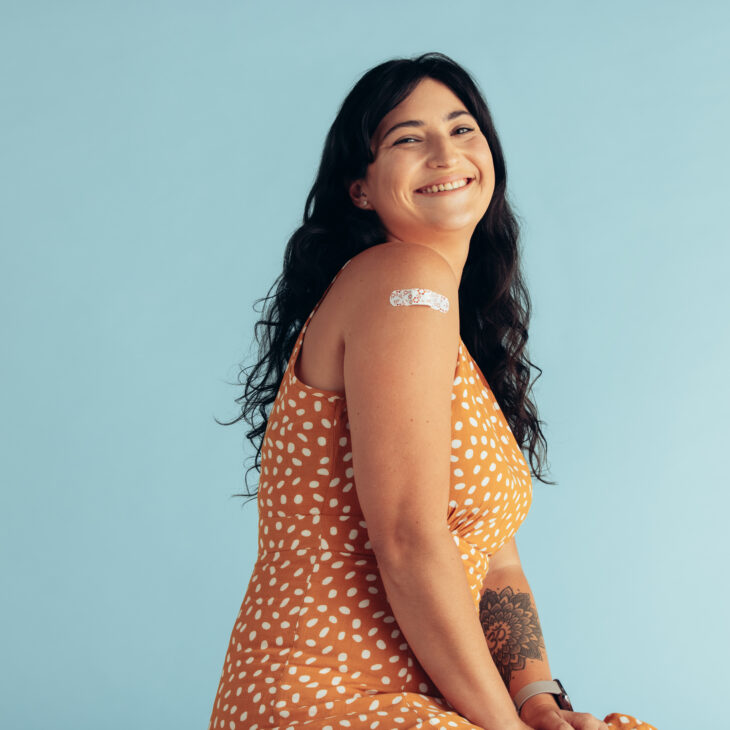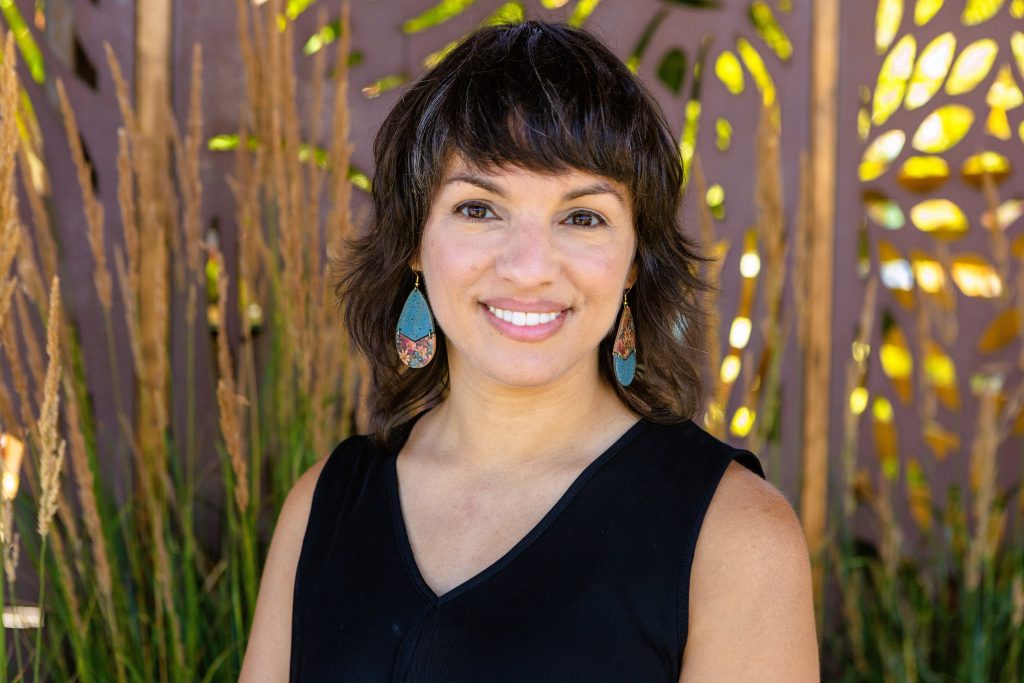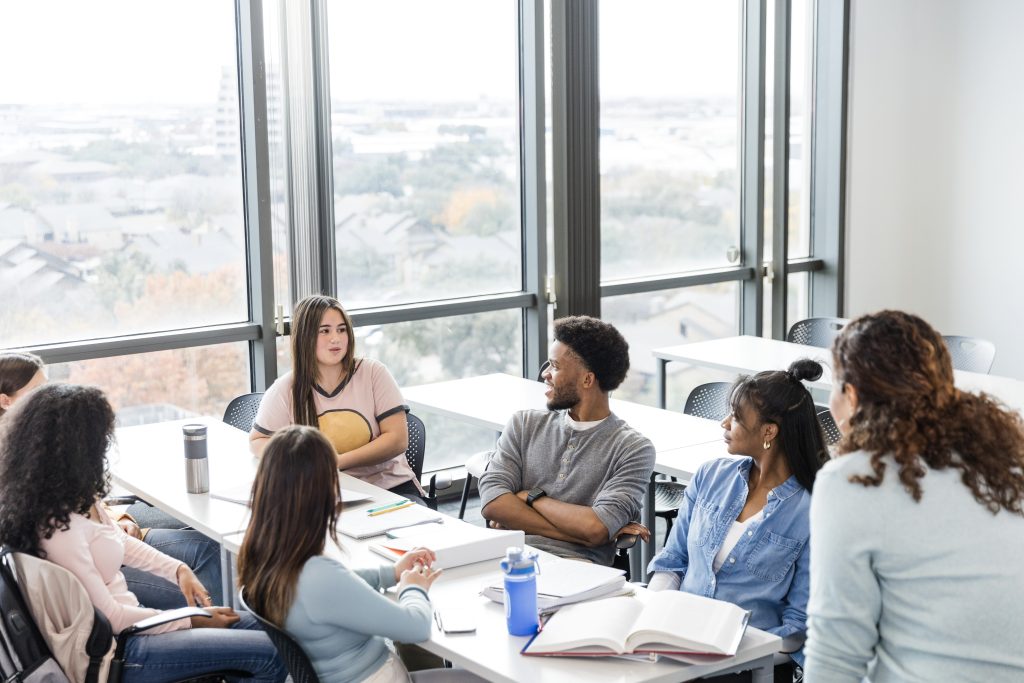In One Tribal Community, Trusted Messengers Pave the Way to Vaccine Acceptance
July 20, 2021

This article is part of a series called Faith in the Field that explores responses to Covid-19—including vaccination efforts—within different faith communities. The series features racially and religiously diverse leaders across the United States who shared their stories with IFYC via one-on-one interviews. In addition to illuminating distinctive experiences of the pandemic through a faith lens, these interviews offer practical guidance for conducting vaccine outreach in thoughtful, culturally competent ways.

The following interview features Gwendena Lee-Gatewood, chairwoman of the White Mountain Apache Tribe. The interview was conducted by Shauna Morin for IA; it has been edited and condensed for clarity.
Interfaith America (IA): I would love to start off by hearing about your work and the journey that brought you to the role you hold now.
Gwendena Lee-Gatewood (GLG): I used to work for our former tribal chairman as his executive assistant for 12 years. And never did I imagine that I would be running for office someday. But before he retired, he gave me a long talk about finding someone he could trust to lead the people. “I can’t just hand the keys to anybody,” he said. “So why don’t you run?” So, I thought about it, I went to my family, and my kids reminded me, “Mom, you’ve always told us you’re never going to know unless you try.” And I thought, you know, if I don’t try, for the rest of my life I will always wonder … So, I made the decision to run, and I prayed about it, and with my family I climbed to our sacred mountain and just said my prayers, and it was a done deal then.
I ran for office against five other men. On the day we got our petitions, I was the only one sitting by myself, and they were all bunched up together. And I’ll never forget that day because I was focused on the table, and they were over there, and I could hear them. And I could hear one talk, like, “Gosh, we feel so bad for her because she’ll be the first one out.” But I just told myself, “You’ve got to give it your best shot and whatever happens, is going to happen.” And the elections came, and I was elected chairwoman for the tribe. It was a historical moment because I was the first–ever female elected to the highest office. That was in April 2018.
IA: Given that you stepped into this role not that long before the pandemic hit, I’m wondering if you could share what your experience has been like. How have you walked with your community through this crisis?
GLG: The day we got our first case [of Covid-19], I had to go on the radio and tell the people in our community. And that was a very, very sad day. A lot of people were scared, and I knew that—despite my being worried—in my voice on the radio I could not divulge that there was worry; I had to give a message of hope. I had to give a message that there are ways to combat this, that health officials are giving us ways to combat the virus and the simplest way is to not get near people, wear your masks, wash your hands, all of that.
From April all the way for a full year and then some, I was on the radio every day. There were people that really didn’t have social media or TV because we live on the reservation and some households have limited resources to some extent. You had to speak in a way that said, “Look, here’s the problem. Don’t be afraid. Use your faith and your prayers; our ancestors went through something similar. We’ve never been through a pandemic, but we’re all in this together. And as long as we help one another, we’ll get through this.” That message had to stay consistent.
IA: You mentioned your ancestors and tying your message to past experiences of tribal members. How has Covid-19 impacted your tribe in particular?
GLG: The day we lost our first tribal elder to Covid … That was awful because out of 17,000 enrolled tribal members now—because of some who fell ill because of the virus—we have less than 200 over the age of 80. These are the elders that lived in the not–so–distant past, rode in the wagons and rode horses, that kind of thing. To preserve the culture, to preserve their knowledge, you really have to protect them. But in multi-generational homes where you have grandma, grandpa, cousins, mom, dad, the kids, the grandkids, all living under one roof … Grandma is not so protected in that environment. So, that got really challenging.
We also lost our medicine man; he died of Covid-19. He had learned to be a medicine man from his dad, and he was revered—kind of like your most senior medical doctor, if you will. He knew all the things and all the other doctors looked to him. He was that kind of a person. When he left, part of our culture went with him. So that was sad. And any time any tribal member passes away, the community comes together, and we have wakes where we sit with the dead for one or two days. But during Covid, we again told the people, “You can’t be doing this.” That really hurt some because that was their form of grieving, their form of accepting what has happened, their way of dealing with all of this.
IA: You’ve named some really difficult challenges, including setting aside or discouraging core aspects of the culture in light of social distancing. Did you find that certain messages helped people understand why this needed to happen? Or maybe more recently, did any messages resonate when it comes to getting vaccinated?
GLG: It was challenging to do the lockdowns because people love their freedom … and people weren’t wearing masks. So, I came up with a design of a mask that had the Great Seal [of the tribe] and a word that said, ‘adagots’ idzaa, and what that means is “take heed, protect yourself.” It was very colorful and very pretty, so people were like, “Wow, I want one of those.” And it helped us promote awareness of the pandemic without even having the person be oriented about how to promote it. Just by wearing it, they’re being asked about this mask and the words on the mask. So, that was a big hit.
In terms of the vaccine, I know that our people, when they first heard about it being developed … any rumor you could ever think of came to the reservation. People really believed that it was something else and not a vaccine. A certain population of tribal members [were listening to] some of our pastors, ministers who were promoting that it was the mark of the beast, and our contact tracers had to go and explain. I had to go on the radio as Chairwoman. But one thing that worked the best was when our elders got vaccinated and then told the people, “It’s not that bad. I got it because I’m old and I need to be protected. If you love your grandma, get vaccinated.” That kind of thing.
I hosted a Facebook show where I had a National Institute of Health [representative] as my guest who was a Navajo man. He gave simple graphics of what the virus looks like and how the mRNA vaccine works. He explained the mRNA vaccine had been studied for decades [and that] we didn’t take any shortcuts. He said Natives are at higher risk and if you get the vaccine, it will help. Although it’s not 100% effective, 95% efficacy is a heck of a deal where you stand 95% chance of not getting it, or if you do get it, it will just be very mild symptoms. And that also seemed to help.
IA: Where do things stand now? Are you still vaccinating quite a bit within the tribe, or has it leveled off?
GLG: We are at about 55%. Our goal is 70%. Just to give you some figures, we’ve given 8,990 first does of the Pfizer vaccine and 8,214 second doses, with the Johnson & Johnson vaccine at 558 doses. It’s been a challenge and we’re still trying to get people vaccinated. So that we don’t waste our vaccines, we went to our neighboring schools. We offered it during the time when the vaccine was difficult to get. We had a good turnout at one school; I think we had 700 people who showed up—non-Apaches, non-Indians. But when we went to another community that was more anti-vaccine … we hardly had any the whole day.
The 20 to 40-year-olds, that’s the most resistant group out of all the groups [in our community]. They’re just being very stubborn. Some of the younger women think they’ll become infertile, so having one-on-one conversations with a medical doctor or nurse, I think will really help them. Learning more about the virus and the vaccine, becoming educated, that will help. But you can’t cram these issues of their health down their throats and then expect them to accept it. Everyone has a learning process. We can help them by providing information, but in the end, the choice continues to remain with them to get vaccinated.
IA: To close, I know there’s been so much heartache and difficulty and I’m wondering if anything has emerged out of this that’s giving you hope right now, or that you will carry forward from this experience?
GLG: We come from a great people. We are people who never gave up when they had adversity. And it reaffirms our faith in our Creator, it reaffirms you can make it through the tough times together, working together. This pandemic, and we are still in the pandemic, really tested people’s faith, really tested their ability to follow directions. There were probably some people who were always in it for themselves. Now, they realize, “It’s not just about me; I have to think about others.” What you took for granted before is now right in front of you—and that is family, time, leaning on faith, and prayer always. And I see that as God working in a mysterious way.
If you would like to know more about IA’s work on Faith in the Vaccine please click here to see how you can help.
Share
Related Articles
American Civic Life
Faith Based Efforts Work in Vaccine Uptake: Now Let’s Make it Easy
American Civic Life
American Civic Life



